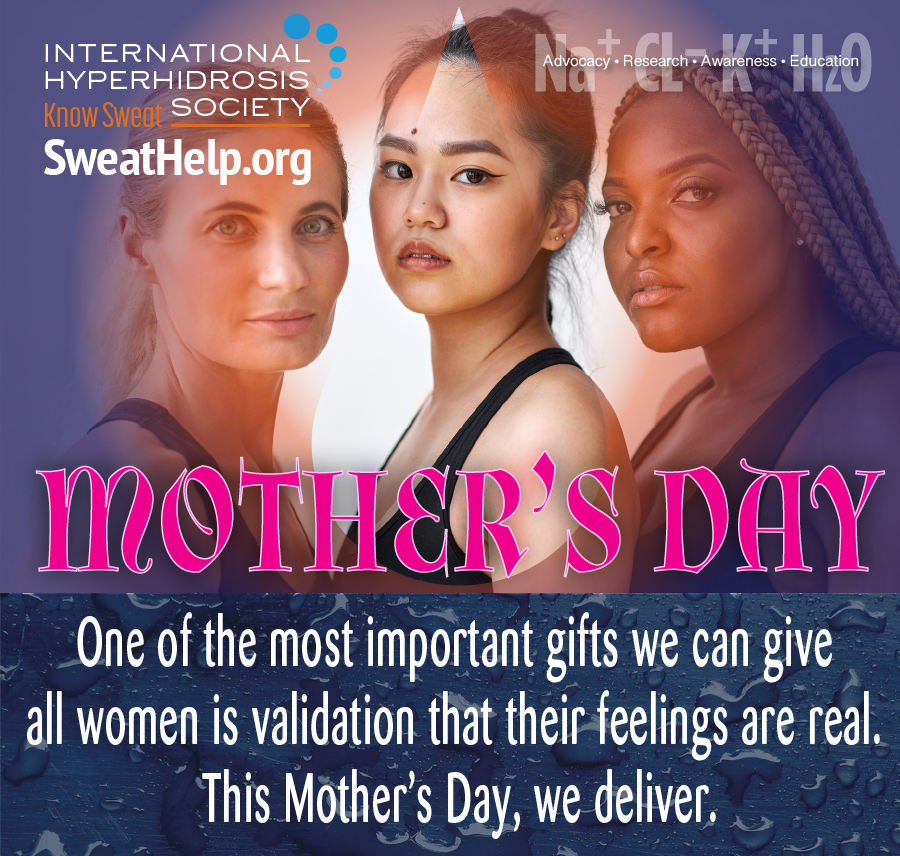

 First-of-Its-Kind Research Shows Kids with Hh Need More Help
First-of-Its-Kind Research Shows Kids with Hh Need More Help
There are an estimated 85.4 million mothers in the United States and 2 billion moms around the world. That’s a lot of motherly love and attention out there! This Mother’s Day we want to share important new research that can help mothers, all caregivers, and clinicians working with young people with hyperhidrosis better understand what kids with excessive sweating (hyperhidrosis or Hh) go through. Hopefully, this increased knowledge will lead to better solutions for all of us and our families.
We know there seems to be a genetic link to excessive sweating and that nearly 2/3rds of Hh sufferers indicate other family members have Hh, too. But what we haven’t quantitatively known in detail (until now) is how much of a toll excessive sweating can take on youths' lives.
To provide the first quantitative data on excessive sweating’s burden in pediatrics, researchers from the International Hyperhidrosis Society (L.J. Pieretti), Dermatology Associates of Georgia (Z.P. Rice), Seattle Children’s Hospital (R. Sidbury), UT Health McGovern Medical School (A.A. Hebert), Dermira Inc.* (T. Devlin), and Cello Health (D. Comoroda and M. Kosinski) have released data on what life is like for children, teens and young adults living with hyperhidrosis. This research has been presented at four leading academic medical conferences and a peer-reviewed medical journal article is underway.
Key details include the prevalence of anxiety and depression among young Hh sufferers, increasing sweating severity with age, and how often children are told their sweat problems are “normal”:
The researchers say the results of this study are important for a number of reasons:
IHhS experts add that the study may be uncovering a tendency for some providers to dismiss excessive sweating as only a minor problem in childhood and adolescence.
To dive deeper into this research, check out the full scientific poster and watch this space for more related news to come. Helping our youngest community members, their mothers, and families to overcome the obstacles of hyperhidrosis is so important to us and we hope this information can help families to better support one another.
Wishing you and your loved ones good health this Mother’s Day.
“We are born of love; Love is our mother.” -Rumi
*The research discussed here was funded by Dermira, Inc., a wholly-owned subsidiary of Eli Lilly and Company, which originally researched, developed and marketed the underarm Hh treatment Qbrexza. Qbrexza is now a registered trademark of Journey Medical Corporation.
Latest Blogs